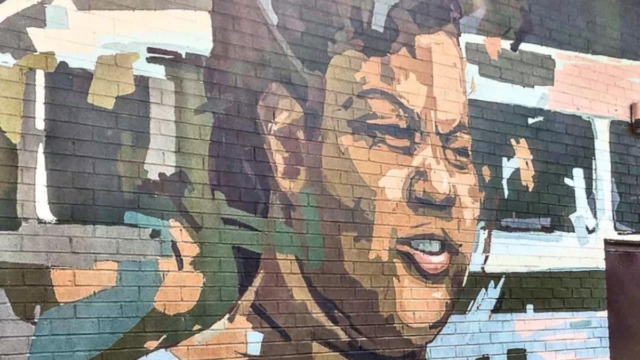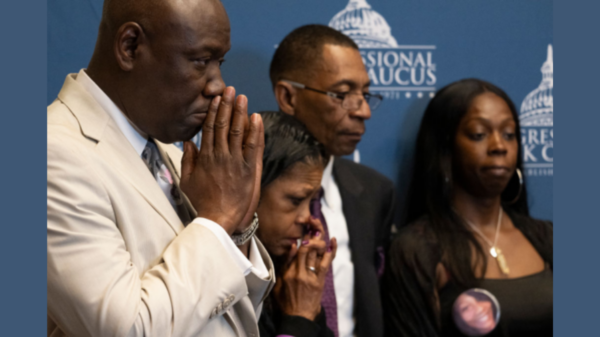
By Sheeka Sanahori
On the northwest corner of Washington and Main Street in downtown Columbia, South Carolina, a brown commemorative street sign sits discreetly above the standard, green signages. Sarah Mae Flemming Way is a nod to a civil rights activist at the intersection where her resistance commenced.
Relatively few people know about Sarah Mae Flemming and the historic legal case that laid the groundwork for Rosa Parks and the more prominent, successful Montgomery bus boycott.
“Part of what we’ve been working to do is to reconstruct, to recover this story so that she is properly recognized as a pivotal civil rights figure,” said Dr. Bobby J. Donaldson, executive director of the Center for Civil Rights History and Research at the University of South Carolina, where he’s also an associate professor of history.
“Here was an individual who was not seeking headlines, who dared to challenge long-standing barriers facing African Americans,” Donaldson said.
Flemming, originally from the small town of Eastover, South Carolina, is described by her family as a selfless woman who led a quiet life. She had no record of activism, but a bus ride on June 22, 1954, catapulted the then-20-year-old’s life in a different direction.
On that day, a white woman had just gotten up to get off the bus, and Flemming sat down in that seat—an act that offended the bus driver, Warren H. Christmus. “Can’t you wait until someone gets off the bus before you sit down? Get up. And I mean right now,” Christmus yelled.
In the Jim Crow era, seating on South Carolina buses was a visible reminder of the racial lines separating the community. Segregation rules for buses in Columbia made it so that Black people could not sit in the same row as or in front of any white bus passenger. This created an accordion effect so that seats available to Black passengers could vary based on each bus ride or change at each stop. However, Black passengers would always have to keep in mind that they could never sit in front of a white person; Christmus claimed Flemming’s seat was in front of two white people.
Embarrassed, Flemming tried to exit the bus through the front door, but not before the driver hit her in the stomach, sending her doubling over from the blow. She retreated to the rear door, where she got off the bus at the intersection of Washington and Main, 2 miles from her intended stop.
When civil rights activist and South Carolina NAACP State Secretary Modjeska Monteith Simkins heard about the incident, she helped file a lawsuit against the bus company on Flemming’s behalf. Fresh from the victory of the historic Brown vs. Board of Education decision in May 1954, when the Supreme Court ruled unanimously against segregation in public schools, the NAACP was eager to challenge segregation at public beaches, golf courses, and on city buses. In their eyes, Flemming’s case was an opportunity to advance NAACP efforts.
On July 21, 1954, Flemming filed her lawsuit against South Carolina Electric & Gas, which operated city buses at the time. The lawsuit asked for $25,000 in damages for the assault and because her 14th Amendment rights had been violated.
“I think she clearly knew that she was jeopardizing her own well-being and that of her family by going for this case,” Donaldson said. “She could have easily pulled out. There were many opportunities to do just that, and she did not. She pushed this case as far as she could.”
The South Carolina judge assigned to the case was a known segregationist and the father of South Carolina’s governor at the time. When Judge George Bell Timmerman Sr. dismissed Flemming’s case, the Fourth Circuit ruled on appeal that Timmerman needed to hear the case because of the Brown vs. Board of Education ruling.
On July 14, 1955, the Fourth Circuit recalled its words in reference to another case, Mayor and City Council of Baltimore City v. Dawson, writing: “It is obvious that racial segregation in recreational activities can no longer be sustained as a proper exercise of the police power of the State.”
Flemming eventually got her jury trial in South Carolina, presided over by Timmerman, and heard by an all-white male jury—but not before Flemming and her legal team encountered intimidation by the KKK with the burning of an 8-foot cross. It took the jury 30 minutes to decide the bus company needn’t pay Flemming any damages, but the Fourth Circuit’s previous ruling proved pivotal in determining that bus segregation was no longer allowed in South Carolina.
Rosa Parks and other civil rights activists in Montgomery, Alabama—hearing the ruling of Flemming’s case—used it to legally end segregation on the city’s buses. Flemming’s case began a wave of desegregating buses that swept the country.
“She saw a lot of pain in her life, and even with that case, I know that that was painful for her to try to stand up and do the right thing and not be fully rewarded physically for your actions. But the fruit of her award, it pretty much catapulted all the way through the whole entire Civil Rights Movement, especially on behalf of Rosa Parks,” Flemming’s granddaughter, Kimberly Mocks, said. “We’re honored that her life expanded beyond just the 640 people in Eastover, South Carolina. We’re just so grateful that a fraction of this world has heard about her.”
Mocks said after the court case, Flemmings returned to her quiet life. She never told her children about her historic involvement in ending bus segregation. Her family believes she did that to protect her children. Today, Flemming’s family embraces her civil rights legacy.
Historians and teachers are becoming more intentional about preserving and telling Flemming’s story, as well as the stories of countless other civil rights activists beyond the movement’s most well-known leaders.
“We flatten the history to where it’s seemingly a predictable linear progression,” Donaldson said. “We do not necessarily amplify the complexity, the nuances of the civil rights struggle.”
Today, Black history walking tours run by civil rights history group Columbia SC 63 take participants down Main Street in Columbia, along stops that share information about Flemming, her case, and the civil rights milestones in Columbia. About a block away from Sarah Mae Flemming Way, Columbia Museum of Art visitors can learn more about her in the exhibit, “Intersection on Main Street: African American Life in Columbia,” on view until 2025.
Mocks remains confident more people will come to learn about her grandmother’s legacy over time, and the family is considering creating an exhibit on Flemming’s family property in Eastover to help tell her story through a personal lens.
“She didn’t care to do things fast,” Mocks said. “She really thought things through; she was very calculated, very wise. So I think that this story is traveling at the pace that she would like it to go.”
Mocks knows her grandmother’s legacy will live on with the same methodical approach Flemming took to life because, once people learn about what she did, it’s a story that’s hard to forget.









You must be logged in to post a comment Login